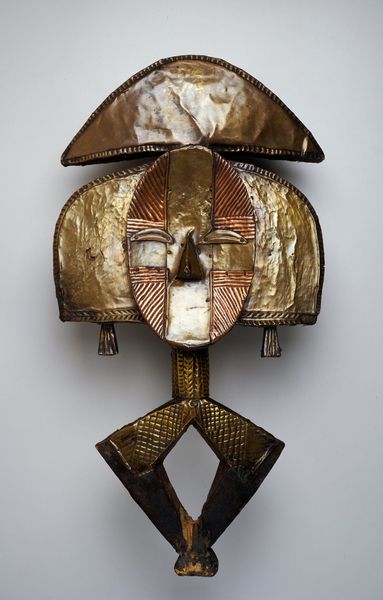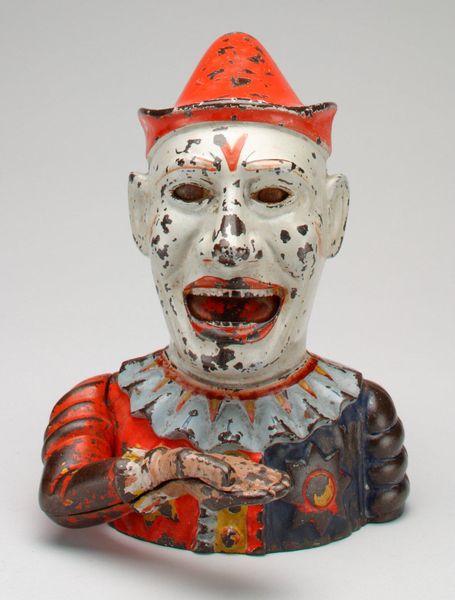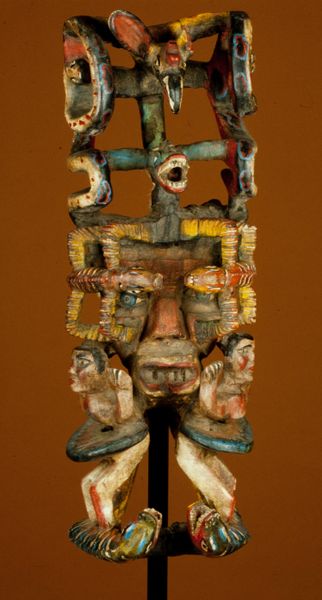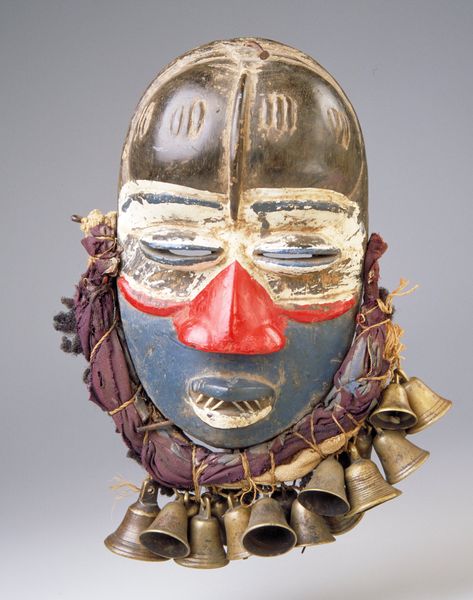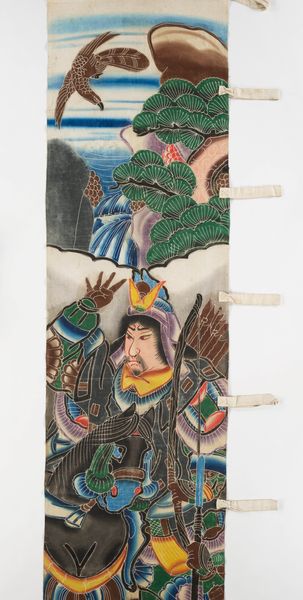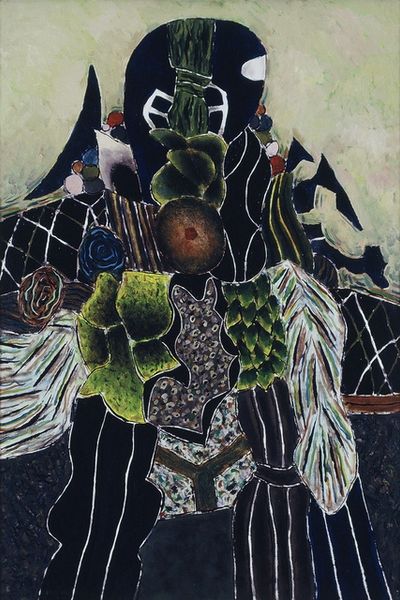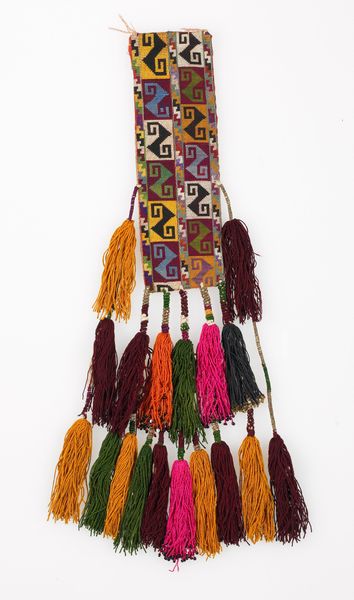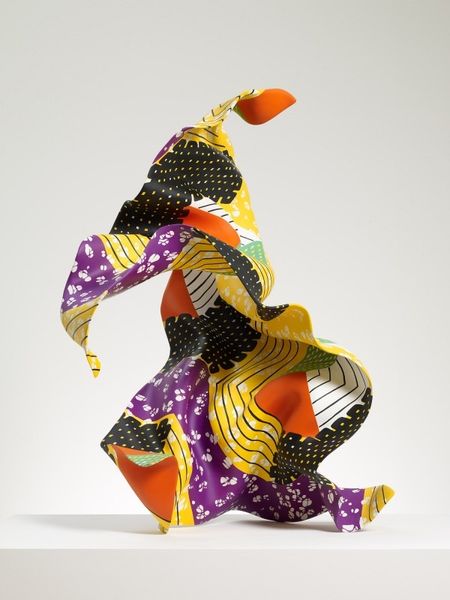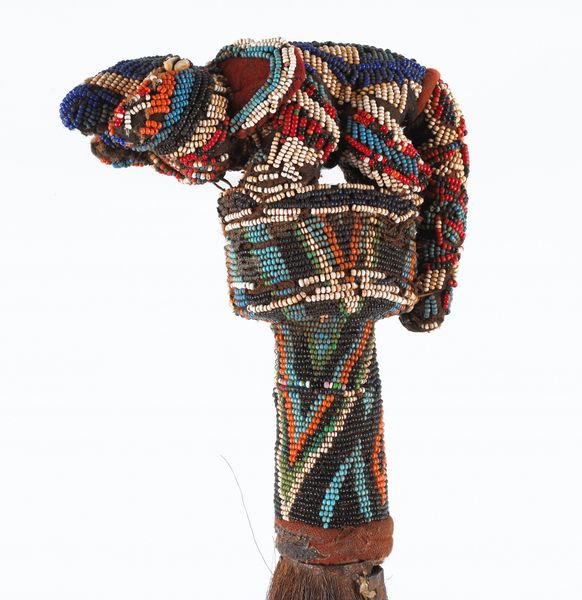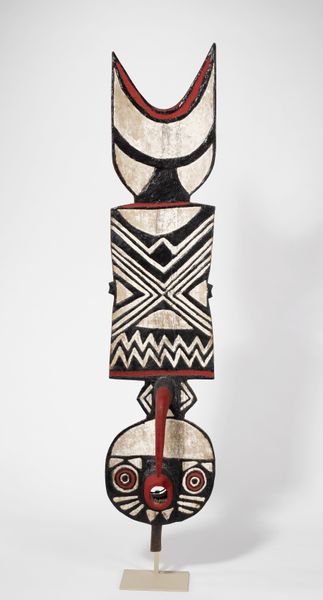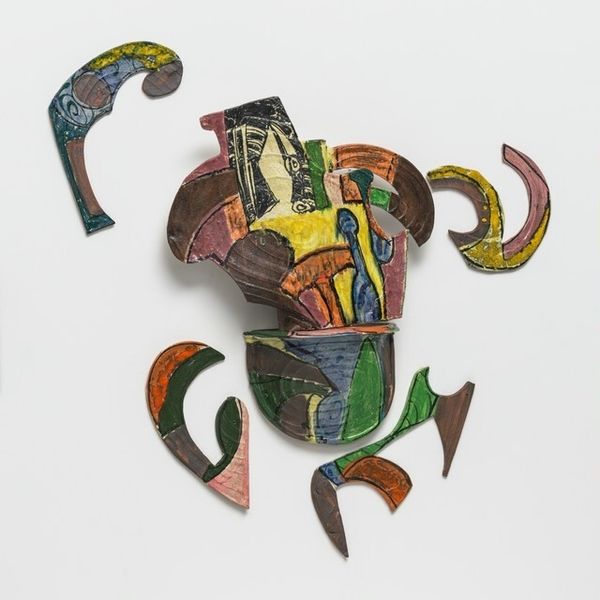
#
3d sculpting
#
sculpture
#
sculptural image
#
unrealistic statue
#
sculpting
#
spray can art
#
surrealist
#
3d art
#
statue
#
digital portrait
Dimensions: Ta16 x 12 x 3 1/2 in. (40.6 x 30.5 x 8.9 cm)
Copyright: Public Domain
Editor: This vibrant "Mask," created by the Tabwa people around the 20th century, strikes me with its intricate beadwork. What draws your eye to it? Curator: Formally, the mask presents a compelling study in geometry and texture. The triangular shape is softened by the meticulous application of beads and the feather crown, creating a visual dialogue between structure and ornamentation. Editor: It seems to combine both rigid form and decorative freedom. Curator: Precisely. Note how the linear arrangement of the beads on the lower portion contrasts with the curvilinear patterns around the eyes and the chaotic burst of the feathers above. How do you think these varying textures impact the overall composition? Editor: I think they contribute to the sense of visual richness and almost a controlled chaos. What can you tell me about its colour? Curator: The palette is noteworthy. A spectrum of colours are used: reds, yellows, blues, greens, each bounded by crisp borders. Colour becomes line here and plays a vital role in structuring the face. Editor: I see how the color delineation sharpens the form, the line being blurred on other examples of similar masks I’ve researched. The absence of curves across the sculpture create geometric interest, whereas other artists seem to have opted for free form. It almost creates a mosaic effect, as opposed to a more relaxed and less defined pattern. Curator: A keen observation. And the relationship of form to materials—the smallness of the beads allows for detail that paint might not afford. Ultimately it’s about surface tension, contrast, form and material dialogue. Editor: I see how your formal analysis helps break down the complexity of the mask and allows me to appreciate each artistic decision made in the piece.
Comments
minneapolisinstituteofart almost 2 years ago
⋮
In the past (and maybe still today), medium diviners among the Tabwa people were possessed by spirits, which enabled them to seek explanations and cures for illness and other misfortunes. This process of enlightenment was called “the rising of the moon,” an expression referring to the dawning of light and hope after a period of darkness. Tabwa artists graphically rendered this concept as a series of dark and light interlocking triangles, a very common motif that was incised as scarification on people’s bodies, braided into hairdos, woven into baskets, and engraved into metal bracelets. It is also visible on this diviner’s mask.
Join the conversation
Join millions of artists and users on Artera today and experience the ultimate creative platform.
